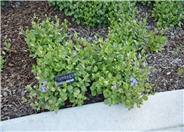
Common name:Dwarf Plumbago, Dwarf Leadwort
Botanical name:Ceratostigma plumbaginoides
Attractive groundcover with glossy green foliage. Intense, cobalt blue flowers emerge in late summer, lasting into fall, when the foliage turns burgundy red. Forms mats 6 to 8 inches tall and spreading 12 to 18 inches. Stunning autumn presence. Pairs well with Moor grass, perennial geraniums, and lady's mantle.
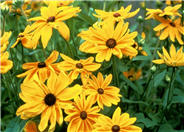
Common name:Gloriosa Daisy
Botanical name:Rudbeckia hirta
Gloriosa daisy are a species of Rudbeckia known for their large flowers in a variety of warm tones. Blooming from mid to late summer and sometimes into the fall, colors range from clear oranges to russet reds, mahogany to brown, many with colored striations on their petals or different-colored eyes. Foliage is lance-like and deep green. Somewhat shorter-lived than R. fulgida or nitida, they are still lovely additions to a summer garden. Heights depend on variety, but generally 20 to 36 inches tall and wide. Slightly less drought tolerant than the other species.
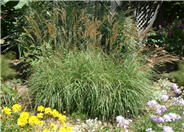
Common name:Japanese Silver Grass, Maiden grass
Botanical name:Miscanthus sinensis
Miscanthus is a large group of ornamental grasses ranging from a few feet to over 7 or 8 feet tall. Blade colors range from solid green, to green with silver mid-ribs, to variegated forms. Plumes are generally held well above foliage clumps, appearing in late summer to early fall, depending on the variety, and may be cut for fresh or dry arrangements.
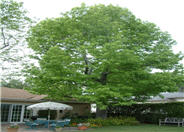
Common name:Liquidambar; American Sweetgum
Botanical name:Liquidambar styraciflua
Liquidamber is a lovely deciduous tree with an upright, narrowly pyramidal habit, growing moderately to 40 feet tall and about 15 to 20 feet wide. Leaves are a rich green and maple-like. The fall color is why you plant this tree, with a kaleidoscope of yellows, oranges, reds, and purples. It has round seedpods, about the size of pingpong balls, and they are sort of spiny; no bother dropping into shrubby or groundcover areas, but a little tough on lawnmowers or feet. They are great for craft projects, though. A number of cultivars are available, with selections made for fall color and size.
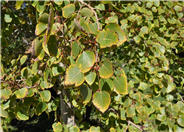
Common name:Western Water Birch
Botanical name:Betula occidentalis
Western Water Birch is a small tree or shrub, growing 20 to 30 feet tall and 15 to 20 feet wide. It tends to grow as a clump with upright, ascending branches. Leaves are oval, sharply pointed, prominently veined, and dark green. Fall color is yellow to orange. Spring catkins and small cone-like fruits mature in the fall and persist into winter, providing interest and forage for birds. Bark is smooth, reddish brown, with thin, cream lenticels (rather like a cherry tree). A Utah native.
| Designer: Kelly Pack | Kelly Asian 19 |
Photographer: GardenSoft |
Water Saving Tip:
In general, lawns only need to be watered once every three days.
Check your irrigation controller and reduce watering times if necessary.
